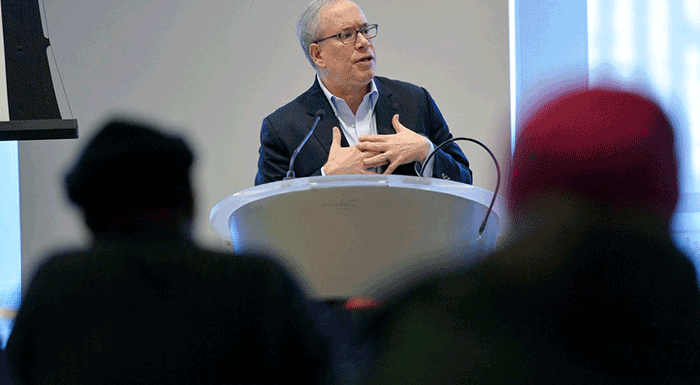File Photo
City Comptroller Scott Stringer
By Forum Staff
The City’s economic growth outpaced the nation in the Second Quarter of 2019 as Gross City Product grew 3.4 percent compared to U.S. Gross Domestic Product, which grew 2.1 percent, and unemployment across the five boroughs remained near the record low of 4 percent, according to an analysis of the City’s economic performance released Thursday by City Comptroller Scott Stringer.
The comptroller’s Second Quarter Economic Update also showed that the city experienced solid job and earnings growth, notably a growth in average hourly wages of 4.4 percent. Other indicators included a strong commercial real estate sector and continued weakness in the residential housing market.
“Our latest economic update reveals that New York City is on a strong economic footing. This is reflected in higher wages, a near record low unemployment rate, strong job growth, and continued strength in most other sectors,” Stringer said. “Despite the expansion, many New Yorkers are still feeling the squeeze of soaring costs on everything from rent to child care as a majority of the job growth continues to be in lower-paying industries. We have a lot more work to do to mitigate our affordability crisis, create access to good-paying jobs, provide affordable housing, and expand quality child care to ensure this city works for everyone. Today’s economic news is welcome—but the work of building a more equitable economy continues.”
According to Stringer’s analysis, the city’s unemployment rate increased slightly to 4.3 percent in Q2 2019 from 4.2 percent in Q1 2019—but still close to the record low of 4 percent. And private sector hiring surged in Q2; however, as Stringer noted, that growth was largely seen in low-wage jobs (paying less than $62,000 per year). Of the 26,200 private sector jobs added in the second quarter, 17,300 (65.8 percent) were in low-wage industries; 3,500 (13.4 percent) were in medium-wage industries ($62,000 to $124,000), and 5,500 (20.8 percent) were in high-wage industries (paying more than $124,000).
The greatest increases in private sector jobs were in the health care and social assistance sectors, at 12,300 new jobs, of which nearly half—5,800 jobs—were in home healthcare services. Education services added 3,400 jobs after losing 2,700 jobs in Q1 2019. Leisure and hospitality added 1,700 jobs, all of which were in arts, entertainment, and recreation. Retail trade jobs increased for the third consecutive quarter, adding 1,600 jobs in Q2 2019. The information sector added 900 jobs and wholesale trade added 600 jobs in Q2 2019, which was the second quarter of gains after six consecutive quarters of job losses, according to Stringer’s Q2 analysis.
And it seems that the Big Apple economy will only get better, as the comptroller noted that leading economic indicators signal continued expansion. The current business condition index provided by ISM-New York, Inc., which measures the current state of the economy from the perspective of business procurement professionals, declined for the third consecutive quarter to 58.6 percent in Q2 2019, down from the record high of 74.7 percent in Q3 2018. The ISM six-month outlook rose to 61.7 percent in Q2 2019. Both these indices are well above a reading of 50 percent indicating projected growth across a majority of industry experts, Stringer said.

